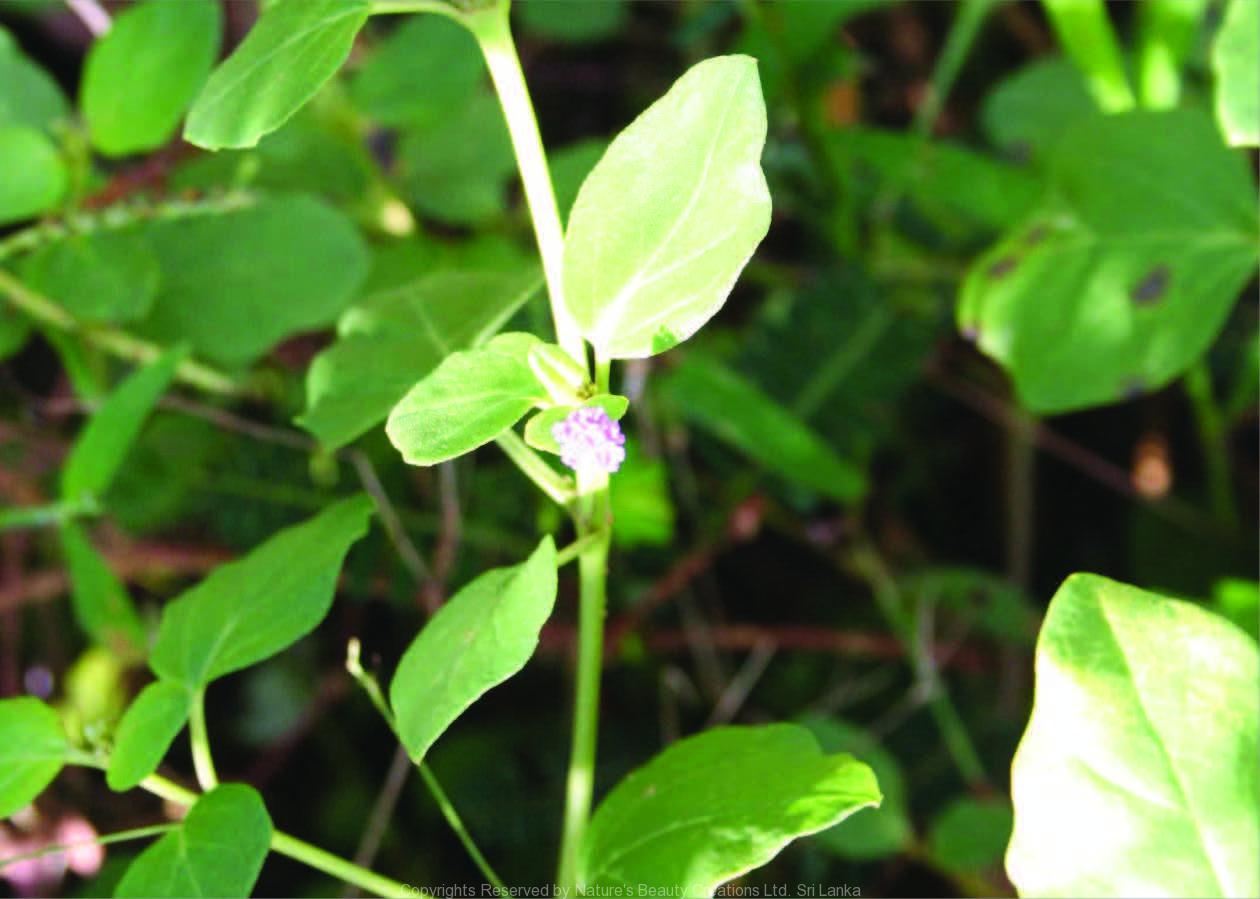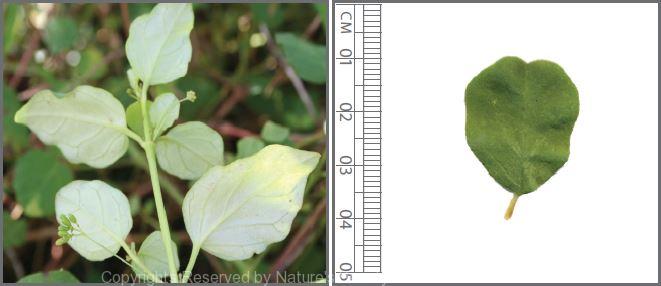

Traditional Knowledge
Useful plant parts :
Whole plant, root and leaf
Uses in traditional medicine :
- Dried root infusion is taken to increase urine flow
- Fried leaves with red onion is eaten as a vegetable to cure piles
- Whole plant is used in disuresis, in oedema and ascites due to liver and kidney ailments
- Roots acts as an emetic, antidysenteric and are used to treat anemia, jaundice, asthma, cough, colic, liver enlargements, abdominal worms, acute leprosy, heart diseases, fistula, anasarca, blood and skin diseases
Scientific Research
Chemical constituents:
Rotenoids: boeravinones A–F and lignan: liriodendrin, hydrocarbon: hentriacontane, β-sitosterol and terpene: ursolic acid from roots; alkaloid: punarnavine, flavonoid: eupalitin and its galactopyranoside from plant
Bioactivity :
Alcohol extract of whole plant: hepatoprotective, antihyperglycaemic, renoprotective; chloroform extract of leaves: antidiabetic; aqueous extract of fresh leaves: antinociceptive; ethanol extract of roots: antiproliferative, immunosuppressive, antistress, adoptogenic; liriodendrin: anticonvalsive; punarnavine: analgaesic, anti-inflammatory, hepatoprotective, antiangiogenic, immunomodulator
Clinical:
Note :
Leaves are used as a vegetable
References : Awasthi, L. P. and Verma, H. N., (2006), Boerhaavia diffusa-A wild herb with potent biological and antimicrobial properties, Asian Agri-History, 10(1), 55-68. Chandan, B. K., et al., (1991), Boerhaavia diffusa: A study of its hepatoprotective activity, Journal of Ethnopharmacology, 31, 299-307 Kaur, M. and Goel, R. K., (2009), Anti-Convulsant Activity of Boerhaavia diffusa: Plausible Role of Calcium Channel Antagonism, Evidence-Based Complementary and Alternative Medicine, 1-7. Lami, N. et al., (1991), Constituents of the Roots of Boerhaavia diffusa L. IV. Isolation and Structural Determination of Boeravinones D, E, and F, Chemical and Pharmaceutical Bulletin, 39(7), 1863-1865. Lima, C. A. H. et al., (2000), The juice of fresh leaves of Boerhaavia diffusa L. (Nyctaginaceae) markedly reduces pain in mice, Journal of Ethnopharmacology, 71, 267-274. Mehrotra, S. et al., (2002), Antilymphoproliferative Activity of Ethanolic Extract of Boerhaavia diffusa Roots, Experimental and Molecular Pathology, 72(3), 236-242. Mehrotra, S. et al., (2002), Immunomodulation by ethanolic extract of Boerhaavia diffusa roots, International Immunopharmacology, 2, 987- 996. Misra, A. N. and Tiwari, H. P., (1971), Constituents of Roots of Boerhaavia diffusa, Photochemistry, 10, 3318-3319. Nalamolu, R. K. et al., (2004), Effect of chronic administration of Boerhaavia diffusa Linn. leaf extract on experimental diabetes in rats, Tropical Journal of Pharmaceutical Research, 3(1), 305-309. Pandey, R. et al., (2005), Immunosuppressive properties of flavonoids isolated from Boerhaavia diffusa Linn, Int Immunopharmacol, 5(3), 541-53. Rawat, A. K. S. et al., (1997), Hepatoprotective activity of Boerhaavia diffusa L. roots a popular Indian ethnomedicine, Journal of Ethnopharma- cology, 56, 61-66. Saraswati, S. et al., (2013), Punarnavine, an alkaloid from Boerhaavia diffusa exhibits anti-angiogenic activity via downregulation of VEGF in vitro and in vivo, Chem Biol Interact, 206(2), 204-13. Singh, P. K. et al., (2011), Antihyperglycaemic and renoprotective effect of Boerhaavia diffusa L. in experimental diabetic rats, J Complement Integr Med, 8. Sumanth, M. and Mustafa, S. S., (2007), Anti-stress, adoptogenic and immunopotentiating activity roots of Boerhaavia diffusa in mice, International Journal of pharmacology, 3(5), 416-420.
Copyrights Reserved By
Natures Beauty Creations




